Tag Archives: 2008
What’s Hot HL Issue 18

Cabbage looper larva. Photo by: Alton N. Sparks, Jr., University of Georgia, Bugwood.org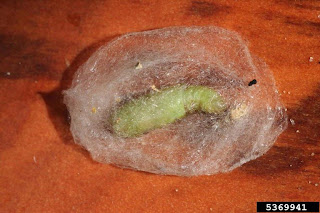
Cabbage looper pupa. Photo by: Whitney Cranshaw, Colorado State University, Bugwood.org
Catalpa sphinx moth larvae. Photo by: Lacy L. Hyche, Auburn University, Bugwood.org
Parasitized catalpa sphinx larva. Photo by: Lacy L. Hyche, Auburn University, Bugwood.org
Brown spots on part of trunk of ash tree are woodpecker marks. Notice one of the woodpecker marks has a hole from where the bird extracted a emerald ash borer larva.
Split bark on trunk of ash tree. Examine split closely and see mining underneath.
Healthy stand (treated) of green ash trees (East Lansing, MI).
Untreated stand of ash trees under attack from emerald ash borer.
Emerald ash borer damage on ash tree
Finger points to emerald ash borer larva. Photos of emerald ash borer provided by: Brian A. Kunkel, Ornmental IPM extension specialist, University of Delaware.
Disease Hotline Issue 18
Puffball. Photo provided by: Nancy Gregory, Plant diagnostician, University of Delaware.
Peony blotch on tree peony leaves.
Hollyhock rust. Image found at the following website: http://www.plantpath.iastate.edu/pdc/node/142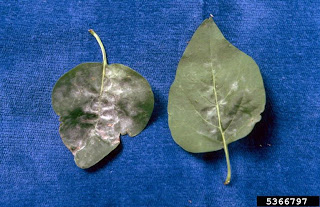
Powdery mildew. Photo provided by: Mike Schomaker, Colorado State Forest Service, Bugwood.org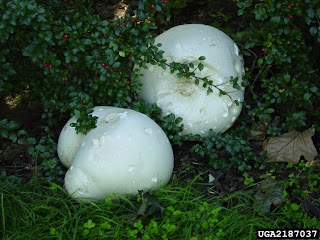
Giant puffball. Photo provided by: Joseph LaForest, University of Georgia, Bugwood.org
Bacterial leaf scorch distant view. Photo provided by: Edward L. Barnard, Florida Department of Agriculture and Consumer Services, Bugwood.org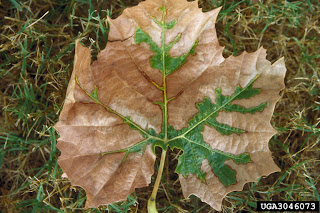
Bacterial leaf scorch. Photo provided by: Theodor D. Leininger, USDA Forest Service, Bugwood.org
Daylily leaf streak. Image found at http://hyg.aces.uiuc.edu/secure/subscribers/200611b.html.
Weed Hot Line Issue 17

Sanitation is important for disease, insect, and weed control in greenhouses.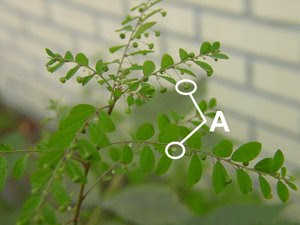
Longstalked phyllanthus. Notice the flowers at the leaflet axils (labeled A).
Liverwort in trays. A gemma cup (circled and marked as A) is the asexual means of propagation.
Flowering woodsorrel. Seeds can shoot 12 feet.
Dodder. The parasitic vine (circled and labeled A) and the flowers (circled and labeled B) of the plant.
Hairy bittercress fruits (labeled A) and flowers (labeled B). All pictures were copied from the following website: http://pubs.caes.uga.edu/caespubs/pubcd/B1246.htm

